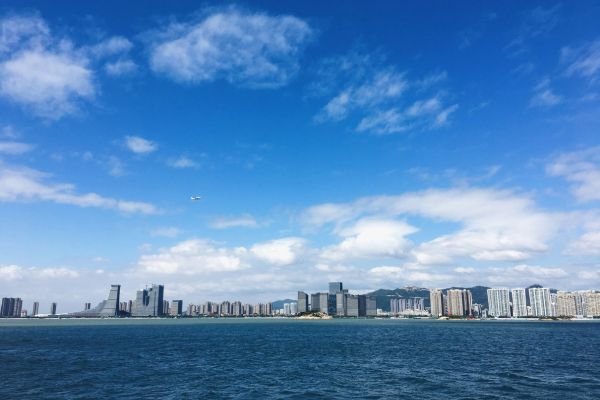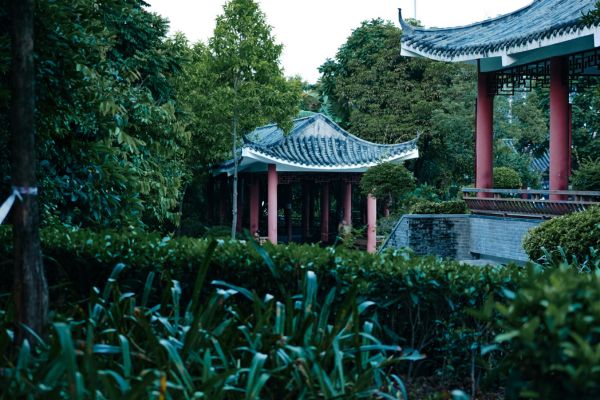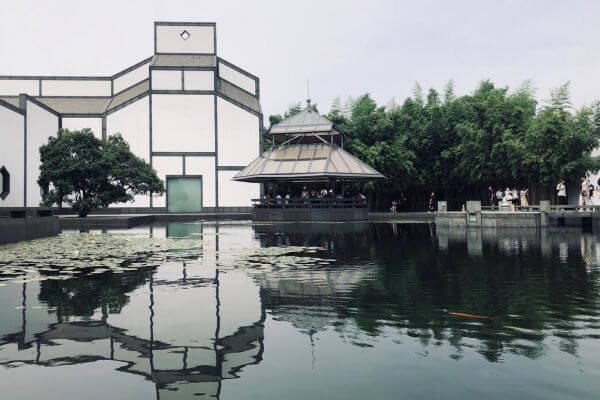
This series will attempt to introduce every case that has been accepted by China International Commercial Court (CICC). This is the second post of this series, taking Asia Optical v. Fuji Film as an example, to observe how the CICC applies its jurisdiction.
In the previous report, we have mentioned Asia Optical v. Fuji Film, a case of unjust enrichment pending before the CICC. The first instance of this case was put successively under the jurisdiction of primary, intermediate and high people’s courts, and finally all the way up to the Supreme People’s Court (SPC). This article will further introduce the basic facts of the case and its litigation process. From this, you can see where the CICC cases were from.
Related Posts on CICC Case Tracking:
- CICC Case Tracking Series -04: On CICC’s Jurisdiction over the Judicial Review of Arbitration with Luck Treat Ltd. Case as an Example
- CICC Case Tracking Series - 03: China’s Second International Commercial Court (As of 20190821)
- CICC Case Tracking Series – 02: On Jurisdiction with Asia Optical as an Example
- CICC Case Tracking Series - 01: China’s First International Commercial Court (As of 20190821)
I. Basic Facts of the Case
1. Litigants
(1) Plaintiffs: Asia Optical Co., Ltd. (亚洲光学股份有限公司, “Asia Optical”), Dongguan Sintai Optical Co., Ltd. (东莞信泰光学有限公司, “Sintai Optical”)
(2) Defendants: Fuji Film Corporation (日本富士胶片株式会社, “Fuji Film”), Fuji Film (China) Investment Co., Ltd. (富士胶片(中国)投资有限公司, “China Fuji”), Fuji Film (China) Investment Co., Ltd. Shenzhen Branch (富士胶片(中国)投资有限公司深圳分公司, “China Fuji Shenzhen Branch”), Fuji Film Optoelectronics (Shenzhen) Co., Ltd. (富士胶片光电(深圳)有限公司, “Fuji Optoelectronics”)
2. Background
(1) Patent litigation
From 2004 to 2009, Fuji Film had commissioned Asia Optical and Sintai Optical several times to manufacture digital cameras according to its specifications. Arbitration clauses were included in the commissioned development contracts. In the process of manufacturing products according to Fuji Film’s requirements, the outsider Eastman Kodak Company (“Kodak”) informed Asia Optical and Sintai Optical that they had used Kodak’s patents during the digital cameras producing process, demanding payment for patent royalties. In 2012, Kodak filed a lawsuit against Asia Optical and Sintai Optical in a court of New York State. After the appeal, the U.S. Federal Court ruled on 1st May 2013 that Asia Optical and Sintai Optical paid Kodak USD 33,726,531 for patent royalties.
(2) Arbitration
Asia Optical and Sintai Optical paid the patent royalties during Dec. 2013 to Sept. 2014 and filed an arbitration application with Japan Commercial Arbitration Association against Fuji Film in 2013, requiring Fuji Film to bear the patent royalties. Japan Commercial Arbitration Association dismissed all their requests on 28 Feb. 2014.
3. Litigation in China
According to Asia Optical and Sintai Optical, Fuji Film has constituted an unjust enrichment by selling digital cameras and making profits without paying the patent royalties, and thus Fuji Film should return the profits to them. To this end, Asia Optical and Sintai Optical filed a lawsuit in China against Fuji Film and its Chinese affiliates.
II. The Course of Litigation
1. Trial by the Nanshan District Primary People’s Court of Shenzhen
On 1st Jul. 2016, the Nanshan District Court accepted the case filed by Asia Optical and Sintai Optical. China Fuji Shenzhen Branch and Fuji Optoelectronics raised objections to jurisdiction during the filing of their answers, arguing that the case should be accepted by the court at a higher level, namely the Shenzhen Intermediate People’s Court.
On 10 Oct. 2016, the Nanshan District Court made a civil ruling “(2016) Yue 0305 Min Chu No. 7345” ((2016) 粤0305民初7345号) that this case shall be transferred to the Shenzhen Intermediate People’s Court.
In the ruling, the Nanshan District Court said that the amount in controversy was CNY 39,972,600 when the case was filed, and later increased to CNY 223,877,134 after the plaintiffs increased their requests. According to the relevant SPC provisions on tier jurisdiction, the case should be under the jurisdiction of the Shenzhen Intermediate People’s Court.
2. Trial by the Shenzhen Intermediate People’s Court
After accepting the case transferred by the Nanshan District Court, the Shenzhen Intermediate People’s Court made a civil ruling “(2017) Yue 03 Min Chu No. 375” ((2017) 粤03民初375号[1]) on 18 April 2017 that the case filed by the plaintiffs shall be dismissed.
In the ruling, the Shenzhen Intermediate People’s Court held that the plaintiffs listed the enterprises invested by Fuji Film in China as co-defendants for the purposes of creating connecting factors to file cases in Chinese courts, as well as of circumventing arbitration agreements. In fact, the parties, the subject matter (that is, the patent royalties paid by Asia Optical and Sintai Optical as determined by the U.S. Federal Court) and the claim (requesting Fuji Film to bear the patent royalties) involved in this case were the same as those in the case arbitrated by Japan Commercial Arbitration Association.
Therefore, firstly, the parties in the case had already reached an arbitration agreement, so the case did not fall within the jurisdiction of the court; secondly, the claim thereof had been arbitrated by Japan Commercial Arbitration Association, and if the Chinese court retried the case, it would violate the principle of non bis in idem.
On this basis, the Shenzhen Intermediate People’s Court dismissed this case filed by the plaintiffs.
3. Trial by the Guangdong High People’s Court
The plaintiffs appealed to the Guangdong High People’s Court.
On 7 Jan. 2018, the Guangdong High People’s Court issued a civil ruling “(2017) Yue Min Zhong No. 2256” ((2017) 粤民终2256号) that the civil ruling made by the Shenzhen Intermediate People’s Court shall be revoked and the case shall fall under the jurisdiction of the Guangdong High People’s Court.
The Guangdong High People’s Court held that the case should be governed by the provisions it promulgated on the jurisdiction of courts in Guangdong Province, [2]which requires that the first instance of foreign-related, Hong Kong, Macao and Taiwan-related civil and commercial disputes with an amount in controversy of CNY 200 million or more within Guangdong shall fall under the jurisdiction of the Guangdong High People’s Court. The amount in controversy of this case had exceeded CNY 200 million, making it fall under the jurisdiction of the Guangdong High People’s Court.
Therefore, the Guangdong High People’s Court held that it was procedurally undue for the court of the first instance (i.e. the Shenzhen Intermediate People’s Court) to handle the case without jurisdiction. Accordingly, the Guangdong High People’s Court revoked the civil ruling made by the Shenzhen Intermediate People’s Court and tried the case by itself.
It is worth noting that, in our opinion, it was incorrect for the Shenzhen Intermediate People’s Court to invoke the principle of non bis in idem. China’s Civil Procedure Law (CPL) stipulates that in a case in which an award has been made by a Chinese arbitration institution, the parties may not bring another action before a people’s court. [3]However, this provision does not apply to foreign arbitral awards, because foreign arbitral awards have no legal effect in China until they are recognized by Chinese courts. In this case, the parties concerned should be able to sue in Chinese courts as well. In other words, Chinese courts can hear the same dispute “in parallel” with foreign arbitration institutions. The Guangdong High People’s Court did not respond to this issue. We guess one of the reasons for the case finally being accepted by the CICC was probably that the CICC wanted to produce a guiding case in handling “parallel proceedings”. That is to say, CICC may respond to the foreign arbitration award in the trial of the case to a certain extent, which reflects its attitude of cooperation with foreign dispute resolution institutions.
At present, no substantive judgment by the Guangdong High People’s Court on this case has been found on China Judgments Online (http://wenshu.court.gov.cn/), and the CICC official website shows that the case has been accepted.
4. Trial by CICC
On 29 December 2018, the CICC said it had accepted Asia Optical and Sintai Optical v. Fuji Film, China Fuji, China Fuji Shenzhen Branch and Fuji Optoelectronics for disputes over unjust enrichment. We believe that this case is very likely to be the aforementioned case given the parties involved and case type of the two cases are identical. In other words, CICC took over the case from the Guangdong High People’s Court, thus putting the case into the highest trial level in China. So far, the case has moved from the lowest level of the primary people’s court to the highest level of the SPC’s International Commercial Court.
III. Analysis on CICC’s Jurisdiction
The criterion for the case acceptance by the CICC shall be subject to Article 2 of the Provisions of the Supreme People’s Court on Several Issues concerning the Establishment of International Commercial Courts (最高人民法院关于设立国际商事法庭若干问题的规定): International commercial courts entertain the following cases:
(1) An international commercial case of first instance which, by the choice of the parties by the agreement prescribed in Article 34 of the Civil Procedural Law, falls under the jurisdiction of the Supreme People’s Court and whose amount of subject matter is above 300 million yuan;
(2) The higher people’s court deems that an international commercial case of first instance under its jurisdiction needs to be tried by the Supreme People’s Court and obtains the approval;
(3) An international commercial case of first instance which has a major impact nationwide;
(4) A case for which the parties apply for arbitration preservation or apply for setting aside or enforcing the international commercial arbitration award in accordance with Article 14 of these Provisions;
(5) Other international commercial cases that need to be tried by international commercial courts as deemed by the Supreme People’s Court.
The amount in controversy of the case is CNY 220 million. Therefore, it does not fall under Item (1), that is, the case whose amount of subject matter is above CNY 300 million.
Hence, we believe that the reason for CICC’s acceptance of the case probably was it considered it to be a case with significant international impact, or it should be accepted by CICC for other considerations, that is, the cases mentioned in Item (2) or Item (5).
It has not yet been clearly reported that whether the case being tried by the SPC was under the request by the Guangdong High People’s Court or under the initiation by the SPC. However, it can be seen from this case that some of the CICC cases are likely to come from cases accepted by high people’s courts, which is similar to that of the Singapore International Commercial Court.
Reference:
[1] (2017)粤03民初375号
http://wenshu.court.gov.cn/website/wenshu/181107ANFZ0BXSK4/index.html?docId=4524742cd57a4e6e9ca0a85100f09f90
[2]《关于调整我省第一审知识产权、涉外、涉港澳台民商事纠纷案件区域管辖和级别管辖等事项的通知》(粤高法发[2008]28号)第六条第(一)项、第七条的规定
[3] 中国民事诉讼法第二百七十三条:经中华人民共和国涉外仲裁机构裁决的,当事人不得向人民法院起诉。一方当事人不履行仲裁裁决的,对方当事人可以向被申请人住所地或者财产所在地的中级人民法院申请执行。
Contributors: Guodong Du 杜国栋 , Yu Chen 陈雨








